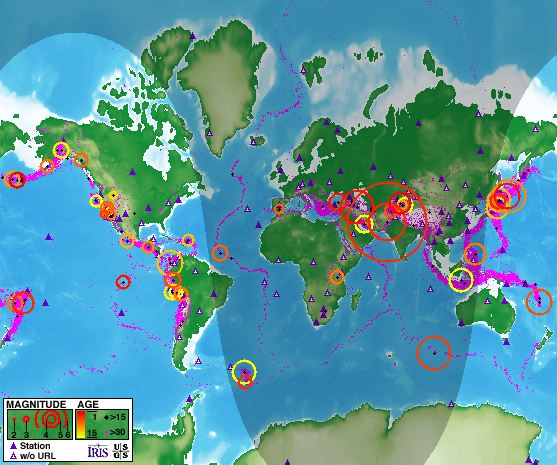
More than 95% of the world's earthquakes occur in discrete belts throughout the world. The existence of these belts is one piece of evidence in support of plate tectonics. In fact, we now know these belts are plate boundaries. Earthquakes occur along all types of plate boundaries: subduction zones, transform faults, and spreading centers.
However, there are earthquakes which occur within plates. For example, the New Madrid area of Missouri (1811-1812), Charleston, South Carolina (1889), Boston (1755), and Hawaii (1975) are all places which have large earthquakes. In fact, in 1811-12 there were four very large earthquakes in the New Madrid area, which are believed to have been in the low magnitude 8 range (there are no actual recordings from which to figure out magnitudes...). These earthquakes actually rang church bells in Boston -- over 1700 kilometers away! -- and caused damage as far away as Washington D.C, more than 1100 kilometers away. There are also stories that say these earthquakes made the Mississippi River flow backwards for a short time!
Earthquakes which occur within plates (intraplate earthquakes) are one of the remaining mysteries for plate tectonics, because plate tectonics cannot strictly explain their occurrence. In some places, such as Hawaii, the earthquakes are related to volcanism, but for the most part, intraplate earthquakes are as yet not fully understood.
Here's a map of earthquakes globally over the past five years, generated using the Seismic Monitor tool from the Incorporated Research Institutions for Seismology (IRIS). As you can see, most earthquakes are at plate boundaries, but there are some intraplate earthquakes. This map is up to date as of 1 March 1997 at 1:31:12 PM PST.

To generate a new map for yourself, use this web page and click on the Seismic Monitor button. The new map will be at most 30 minutes old.
Greg Anderson